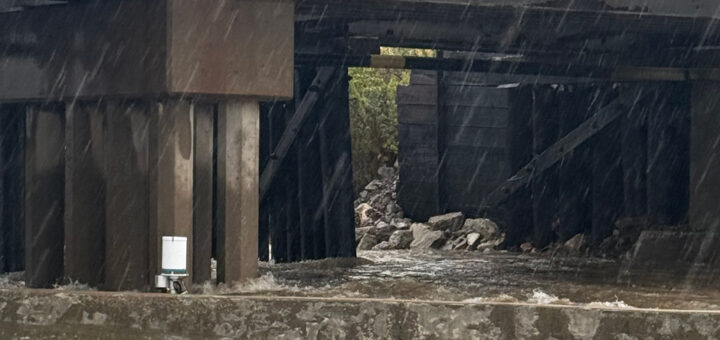Research Brief: Emergence of New Temperature Trends in Freshwater Lakes
0Under current lake models accounting for climate change, seasonal temperatures may fall outside the range of natural variability. Unfortunately, as temperature trends change, lake ecosystems are also impacted as native species have to adjust to new conditions or die under colder or warmer temperatures.
A 2024 article published in Nature Geoscience refers to this occurrence as “no-analogue conditions,” describing environmental conditions—in this case, temperature trends—that fall outside of historical norms and expectations. The study sought to identify where/when no-analogue conditions appear and note drivers of the change.1

Mendenhall Glacier. (Credit: Mariano Mantel via Flickr CC BY-NC 2.0)
Methods
Both onset and drivers of no-analogue conditions were observed using a 100-member ensemble of historical (1850–2014) and future (2015–2100) simulations in the Community Earth System Model version 2 Large Ensemble (CESM2-LE).
Using the model, forced (anthropogenic) and natural variability of depth-resolved lake temperature changes during the open-water, ice-free season. The model enables the identification of the forced climate change signal itself and a timescale over which such changes will emerge over natural variability.
Results
The simulations revealed that no-analogue conditions will emerge at the surface of many northern lakes under a global warming of 4.0 °C above pre-industrial conditions.1 At lower altitudes, new temperature trends will occur sooner under 2.4 °C due to a weaker range of natural variability.
Similarly, no-analogue trends are projected in subsurface water, with changes occurring first at low latitudes and occurring last, if at all, at higher latitudes.
One of the most concerning impacts of such changes is how new climate trends impact freshwater habitats. The study notes that habitability declines as “unparalleled climates with no modern counterparts” emerge, leading to rearrangements of freshwater habitats this century.1
Under a continuously changing climate, fisheries and other natural resources are endangered as natural trends shift. Native fish and vegetation losses due to warmer water temperatures will impact land use, and understanding the onset and drivers of these conditions is essential to crafting informed management solutions.
Source
- Huang, L., Woolway, R.I., Timmermann, A. et al. Emergence of lake conditions that exceed natural temperature variability. Nat. Geosci. 17, 763–769 (2024). https://doi.org/10.1038/s41561-024-01491-5













